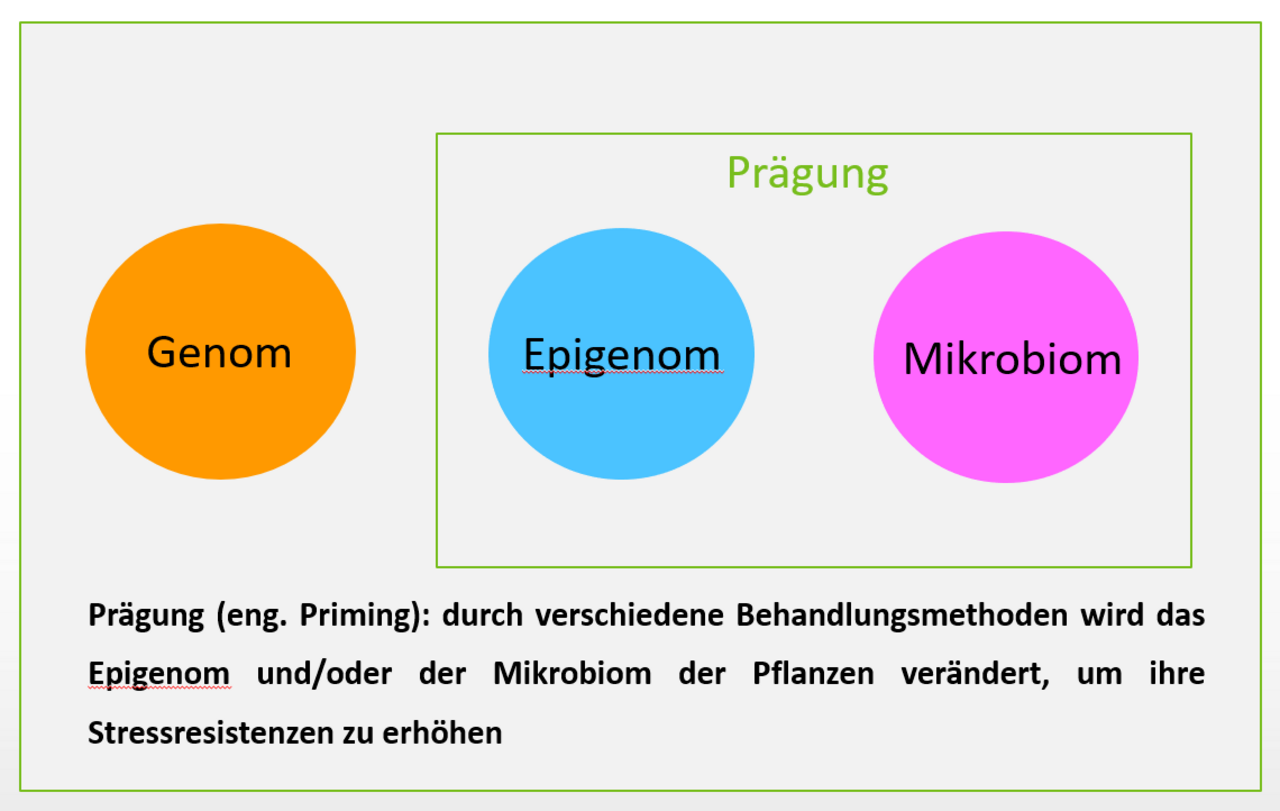Project
Priming: an alternative strategy for faster resistance induction in forest tree species

Priming: an alternative strategy for faster resistance induction in forest tree species
“Priming” allows resistance induction without use of repeated crossing cycles and no changes in the genomic constitution are required. Hence, this method represents a strategy for improving performance of valuable so-called plus trees.
Background and Objective
Increasing levels of biotic and abiotic stress are expected in world forests due to climate change. Therefore, the development of efficient strategies allowing resistance induction in forest tree species is paramount.
The potential of forest tree breeding on the induction of stress resistance is strongly limited by the long generation time of tree species. “Priming” could represent an alternative approach as it has been successfully used before in both annual and perennial plants for resistance induction. An epigenetic background for priming-induced resistance and its heritability could be confirmed already in several cases.
“Priming” allows resistance induction without use of repeated crossing cycles and no changes in the genomic constitution are required. Hence, this method represents a strategy for improving performance of valuable so-called plus trees preserving their genomic structure. This method has the potential to promote a more efficient adaptation of the local forests to climate change, avoiding at the same time loss of gene pool.
The long-term survival of ash and elm populations in Germany is strongly affected by the introduction of non-native fungi illnesses. In the frame of this research project, several “Priming” approaches will be tested with the aim of improving resistance in both tree species.
Approach
Young plants and seeds will be used for this study. Afterwards, different resistance tests will be carried out with the treated plants. Selected plants will be further studied using MSAP („methylation sensitive amplified polymorphism“) and qPCRs. This approach aims finding correlations between priming induced resistance and epigenetic changes. Furthermore, the stability of the induced resistance will be studied at different periods of time. A field experiment with the obtained plants is planned for a second project phase.
Thünen-Contact

Involved Thünen-Partners
Involved external Thünen-Partners
-
Universität Hamburg
(Hamburg, Deutschland)
Funding Body
-
Federal Office for Agriculture and Food (BLE)
(national, öffentlich)
Duration
4.2017 - 3.2023
More Information
Project funding number: 28WB408101
Funding program: Waldklimafonds (Programmbestandteil des Sondervermögens Energie- und Klimafonds)
Project status:
finished
Publications
- 0
Hönicka H, Bein S, Starczak M, Gackowski D (2024) Exploring the interaction between aminobutyric acid and epigenetics in modulating ash dieback response in European ash (Fraxinus excelsior). J Plant Dis Protect 131(5):1427-1439, DOI:10.1007/s41348-024-00989-9
- 1
Hönicka H, Bein S, Starczak M, Graf W, Hanelt D, Gackowski D (2024) ß-Aminobutyric acid promotes stress tolerance, physiological adjustments, as well as broad epigenetic changes at DNA and RNA nucleobases in field elms (Ulmus minor). BMC Plant Biol 24:779, DOI:10.1186/s12870-024-05425-6
- 2
Agius DR, Kapazoglou A, Avramidou EV, Baranek M, Carneros E, Caro E, Castiglione S, Cicatelli A, Radanovic A, Ebejer J-P, Gackowski D, Guarino F, Gulyas A, Hidvegi N, Hönicka H, Inacio V, Johannes F, Karalija E, Lieberman-Lazarovich M, Martinelli F, et al (2023) Exploring the crop epigenome: a comparison of DNA methylation profiling techniques. Front Plant Sci 14:1181039, DOI:10.3389/fpls.2023.1181039
- 3
Bein S, Hönicka H, Graf W (2022) Breaking seed dormancy in common ash (Fraxinus excelsior) - methods and seedling performance. In: Plant Sciences for a Sustainable Future : Botanik-Tagung, International Conference of the German Society for Plant Sciences, 2022 Bonn, 28 August - 01 September ; Programme. Deutsche Botanische Gesellschaft, p 150
- 4
Hönicka H, Bein S, Fladung M (2022) Förderung von Resistenzen bei Forstbäumen durch Prägung : [Abstract] [online]. Gülzow: Fachagentur Nachwachsende Rohstoffe, 1 p, zu finden in <https://www.waldklimafondskongress.de/fileadmin/Projekte/2022/Waldklimafonds/Poster_Baumartenwahl/Hoenicka_Abstract.pdf> [zitiert am 04.01.2023]
- 5
Hönicka H, Bein S, Graf W, Hanelt D (2022) Physiological and morphological changes promoted in field elms (Ulmus minor Mill.) by priming with β-aminobutyric acid. In: Plant Sciences for a Sustainable Future : Botanik-Tagung, International Conference of the German Society for Plant Sciences, 2022 Bonn, 28 August - 01 September ; Programme. Deutsche Botanische Gesellschaft, p 159
- 6
Hönicka H, Bein S, Graf W (2022) Priming resistance to ash dieback disease in common ash (Fraxinus excelsior). In: Plant Sciences for a Sustainable Future : Botanik-Tagung, International Conference of the German Society for Plant Sciences, 2022 Bonn, 28 August - 01 September ; Programme. Deutsche Botanische Gesellschaft, p 199
- 7
Mladenov V, Fotopoulos V, Kaiserli E, Karalija E, Maury S, Baranek M, Segal N, Testillano PS, Vassileva V, Pinto G, Nagel M, Hönicka H, Miladinovic D, Gallusci P, Vergata C, Kapazoglou A, Abraham E, Tani E, Gerakari M, Sarri E, et al (2021) Deciphering the epigenetic alphabet involved in transgenerational stress memory in crops. Int J Mol Sci 22(13):7118, DOI:10.3390/ijms22137118
- 8
Hönicka H, Fladung M (2019) "Prägung": alternative Resistenzen für Baumarten. AFZ Der Wald 74(5):12-15
- 9
Hönicka H, Fladung M, Bein S (2019) Evaluation of alternative methods for resistance induction in tree species. In: Deutsche Botanische Gesellschaft (ed) Botanikertagung 2019 : international plant science conference ; 15.-19. September, Rostock. Rostock: Univ Rostock, p 191

![[Translate to English:] [Translate to English:]](/media/_processed_/f/3/csm_2022_Titelbild_gross2_Saatgut_in_Hand_9ffb8f5748.jpg)
![[Translate to English:] [Translate to English:]](/media/_processed_/f/3/csm_2022_Titelbild_gross2_Saatgut_in_Hand_c17270fcc0.jpg)





